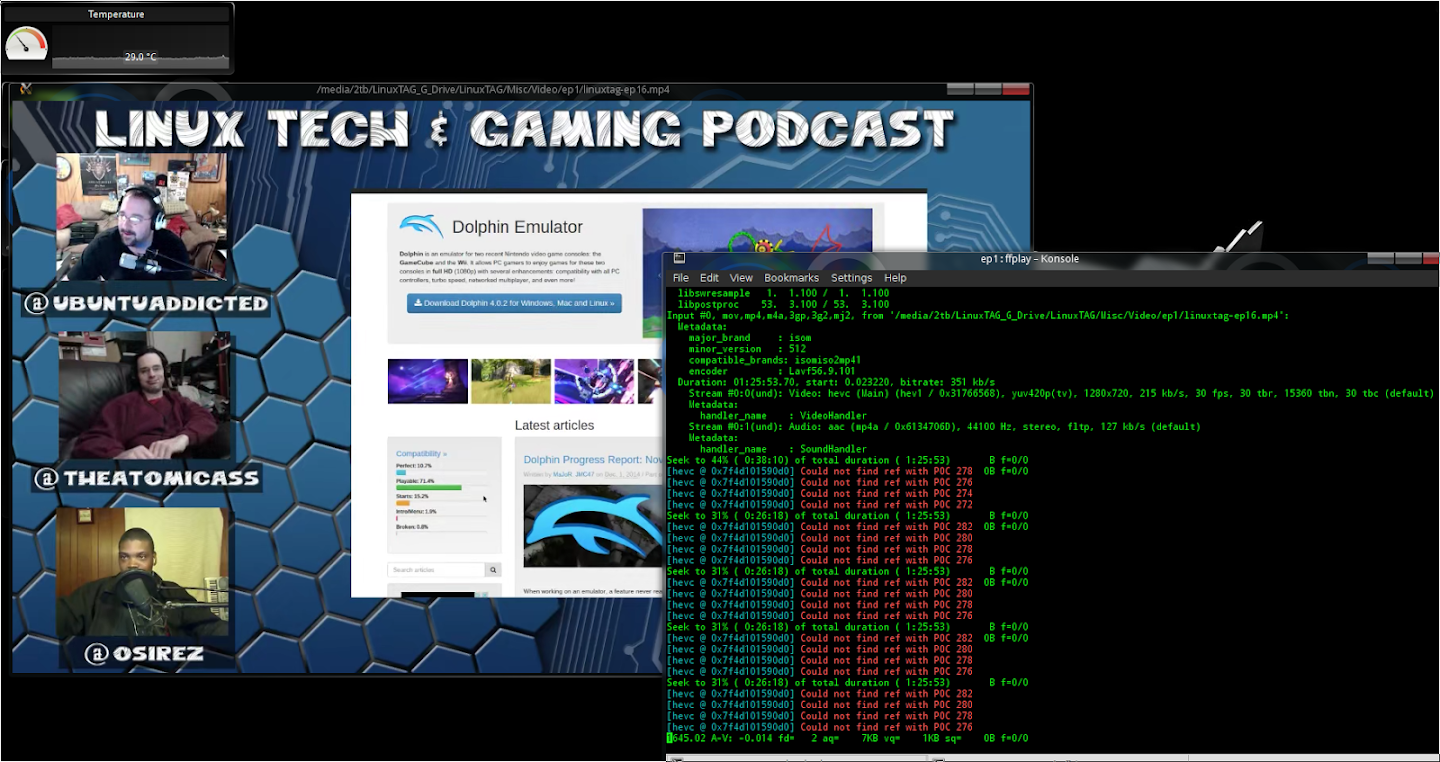ubuntuaddicted
Member
I wanted to have a discussion about HVEC and VP9 because of their awesome compression ratios. I see a huge advantage of using x265 (HVEC) or vp9 (webM) due to the low low bitrate that can be used. and I am not specifically talking about livestreaming because i've read that the vp9 encoders are dog slow and aren't feasible for real time encoding, only for VOD content where it doesn't matter how long it takes to encode the video, the end results is a great vp9 (webM) file which can be uploaded to youtube or the like if that site allows that format and of course the viewers browser would need to support vp9 playback as well but most do now days. VP9 works in the Chrome, Firefox and Opera browsers, but it's still in testing for Android. The latest version of the mobile operating system, 4.4 aka KitKat, can decode VP9 video -- 1080p for a Google Nexus 5 phone and 720p video for the older Nexus 4.
Media Source Extensions (MSE), HTML5 playback has become sufficiently robust for most producers of non-DRM content to stop using Flash. Specifically, MSE delivers both adaptive streaming and live, both with H.264 and VP9.
VP9 starts 15 percent faster than H.264. It moves to HD 15 percent faster. VP9 works in the Chrome, Firefox and Opera browsers, but it's still in testing for Android. The obvious problem is lack of support in Internet Explorer and Safari, which YouTube addresses by supplying H.264 to those browsers, with Flash fallback to legacy browsers. The latest version of the mobile operating system, 4.4 aka KitKat, can decode VP9 video -- 1080p for a Google Nexus 5 phone and 720p video for the older Nexus 4.
Sooooo, I have a goal to create the highest quality content i can while trying for the smallest possible size so that i can keep bandwidth costs down on my website, for a podcast that's not yet widely known about going with VP9 seems like the thing to do, if a viewer is using IE or Safari well then I guess they can't watch. :) I know that's silly to do but in my initial testing I've seen 50% size reduction with very similar quality.
What are you thoughts and do you have any inside info on some new open source html5 players being worked on? Do you know of any implementations of browser players that utilize hardware decoding of HVEC and webM?
Media Source Extensions (MSE), HTML5 playback has become sufficiently robust for most producers of non-DRM content to stop using Flash. Specifically, MSE delivers both adaptive streaming and live, both with H.264 and VP9.
VP9 starts 15 percent faster than H.264. It moves to HD 15 percent faster. VP9 works in the Chrome, Firefox and Opera browsers, but it's still in testing for Android. The obvious problem is lack of support in Internet Explorer and Safari, which YouTube addresses by supplying H.264 to those browsers, with Flash fallback to legacy browsers. The latest version of the mobile operating system, 4.4 aka KitKat, can decode VP9 video -- 1080p for a Google Nexus 5 phone and 720p video for the older Nexus 4.
Sooooo, I have a goal to create the highest quality content i can while trying for the smallest possible size so that i can keep bandwidth costs down on my website, for a podcast that's not yet widely known about going with VP9 seems like the thing to do, if a viewer is using IE or Safari well then I guess they can't watch. :) I know that's silly to do but in my initial testing I've seen 50% size reduction with very similar quality.
What are you thoughts and do you have any inside info on some new open source html5 players being worked on? Do you know of any implementations of browser players that utilize hardware decoding of HVEC and webM?



